After completing the harvest, you need to think about what other types of work need to be done before the cold weather. It should be borne in mind that preparing a dacha for winter takes several days. If autumn procedures are carried out in a timely manner, in the spring, summer residents will be greeted by well-wintered trees, berry beds and flower beds; buildings, houses, greenhouses, etc. will not be damaged.

The content of the article:
- Turn off the water
- Turn off gas and electricity
- Preserve the house and outbuildings
- Protection from thieves
- Preparing the pool for conservation for the winter
-
Preparing a summer cottage for winter
- Plant preparation
- Lawn preparation
- Cleaning the summer cottage
- Soil preparation
- Snowblower
- Preparing equipment for winter
Turn off the water
In preparation for winter, you need to drain the water from the toilet cistern, faucets, heating boilers, heating system, and water seals. This is due to the fact that when water freezes it expands. This can lead to ruptures in the water supply and sewerage systems.
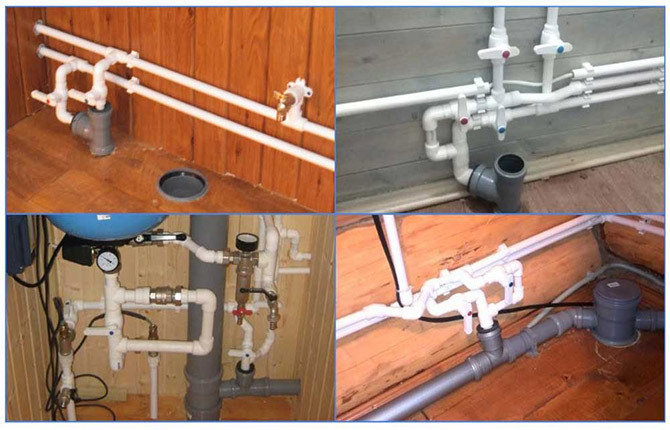
If your dacha has an autonomous water supply system in the form of a well or borehole, you need to remove the pumping equipment before winter. After draining the liquid from the hoses and pipes, they are brought into a specially designated place in the house or barn.

When preparing a summer house, do not leave water in barrels, plastic bottles and other containers for the winter in order to avoid flooding the house with liquid from containers cracked in the cold.
Turn off gas and electricity
When deciding how to prepare a dacha for winter, they take measures to ensure the safety of the home. In a situation where it is connected to a gas pipeline, its supply is shut off at the entry point. It is not enough to turn off the gas at the stove or boiler during preparation. With an autonomous connection, the gas is shut off at the tank or cylinder.

During the winter, electricity in the house, bathhouse and other dacha buildings is completely turned off. Such preparation is important, since power surges in rural areas can cause a fire. Before turning off the general switch, defrost and wash the refrigerator. After drying, the door is left half open. The washing machine drains the water and cleans the filter and drum. Wipe dry. The door and tray do not close tightly.
Preserve the house and outbuildings
When considering actions to understand how to properly prepare a summer cottage for the cold season, do not forget to carry out general cleaning in all buildings, including the house.

Dishes are washed in the kitchen area. They put it away in cabinets with doors. Clean work surfaces, stove, and oven from grease marks. Remove all perishable foods during preparation so as not to attract rats and mice. Cereals, sugar, pasta, if it is decided to leave them, are placed in glass jars with sealed metal lids.
All rooms are wet cleaned. They take down the curtains. They need to be washed and dried. Place in cabinets with doors. Upholstered furniture is covered with thick covers, and then, at the same time as cabinets and mouse cabinets, they are wrapped in film.

They inspect the house to determine its condition. They check the roofing of all dacha buildings. When preparing, you need to make sure that it does not leak and can withstand the snow load. If cracks or damage are found on the walls, roof, or foundation, they are eliminated. This will prevent moisture from entering the interior in winter, causing mold and rot.

While continuing to prepare the dacha for conservation, make sure that the windows and doors close tightly. This means that moisture will not penetrate through them. If blinds are installed from the inside, they must be closed. You can curtain the window openings with film.

Air ducts in the basement protect against rodents. Locks are lubricated for winter. Use machine oil to prevent rust.
Protection from thieves
If you have to leave your dacha for a long time in winter, you need to think about protection against possible entry by thieves.
Several preparation methods are used:
- Installing an alarm This is a reliable method, since when the signal is triggered, police officers arrive at the dacha and can detain the thieves. But not all summer residents are satisfied with the high price.

- Video surveillance installation. If you have the opportunity to buy expensive equipment, you can secure your dacha, since thieves will not risk entering such an area.
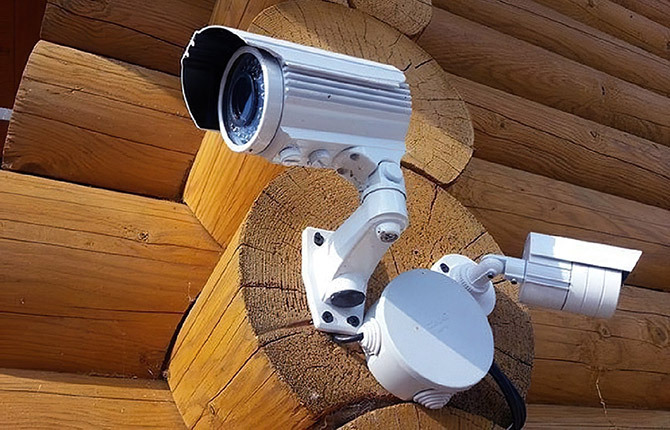
- In areas where it is impossible to connect the dacha site to a security point, you need to secure the house. For winter, windows are closed from the outside with strong shutters or bars are installed.
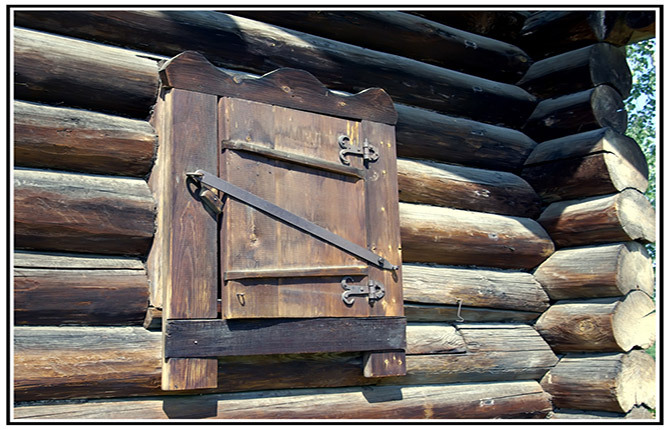
Purchase reliable locks for doors and gates. Documents and valuables will have to be taken with you from the dacha after completion of preparation. You need to insure your home and property not only against theft, but also against possible natural disasters.
Preparing the pool for conservation for the winter
Often artificial pools are installed in small areas of the dacha. If these are frame or inflatable models, advice on how to properly prepare them for winter is contained in the instructions.
Pools made of non-frost-resistant materials must be drained in the fall. All equipment is cleared of liquid. Wash the walls and bottom of the pools and dry. Air is deflated from inflatable models. Preparing frame models involves disassembling them. Storage in winter often requires a heated building. The storage temperature specified by the manufacturer must be observed.

If the pool at the dacha is located in a hole prepared in advance, and its edges do not rise above the surface, leave it filled with water for the winter. If possible, the water from the thicket is pumped out beforehand during preparation. Internal surfaces are washed and then dried. Fill with clean water.
The equipment is removed and transferred to a heated building. Further preparation involves covering the pool with a thick awning. To prevent damage to the walls by freezing water, compensator floats are installed. They can be replaced with plastic bottles connected to each other with a cord.

Preparing a summer cottage for winter
Work in the garden and vegetable garden is often completed by mid-November. Preparing for winter includes several activities.
Plant preparation
At the dacha, after harvesting in the autumn season, the plants enter a dormant period. At this stage, they are prepared step by step for winter:
- Trimming. Before severe frosts, remove dried, broken branches with traces of disease and the presence of pests. Apply disinfectant var to the sections.
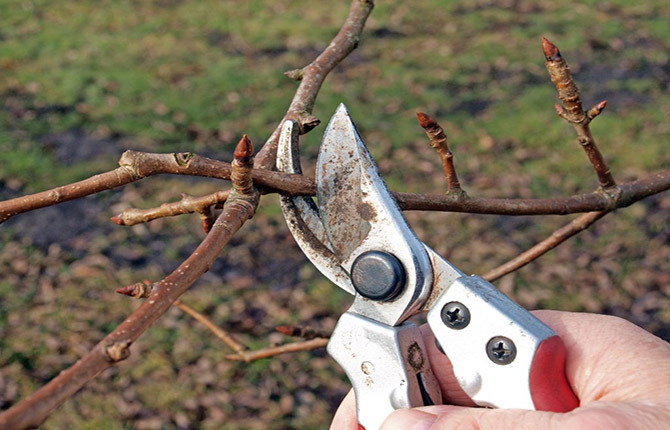
-
Feeding. During the growing season, the soil on the site has become depleted, so the list of measures to prepare summer cottages for winter includes the application of fertilizers. They will allow shrubs and trees to withstand the cold well.

Each culture has its own norm.
Table 1. Autumn garden feeding
| Culture | Feeding time | Application rate (per 1 plant) |
| Pear, apple tree | After full harvest | Potassium sulfate (1 cup) + superphosphate (1.5 cups) |
| Cherry plum, plum | After completing the fruit harvest | Potassium sulfate (2 tbsp. l.) + superphosphate (3 tbsp. l.) |
| Cherry | End of September | Potassium sulfate (3 tbsp. l.) + superphosphate (1 glass) |
| Gooseberry | End of September | Potassium sulfate (4 tbsp. l.) + superphosphate (1.5 tbsp. l.) |
| Currant | Third ten days of September - first week of October | Potassium sulfate (1 cup) + superphosphate (½ cup) |
Keep in mind that nitrogen fertilizing of the garden at the dacha will only be needed in the spring. You can sprinkle well-rotted compost into tree trunk circles. It increases winter hardiness and saturates the soil with useful compounds. Organic matter is placed under berry bushes annually, and under fruit trees at intervals of 2–3 years. The norm is 4–5 kg/sq. m.
-


- Destruction of infectious agents and pests. Before the onset of the cold season, it is necessary to clear the area of the dacha from leaves, tops and other organic residues, which serve as breeding grounds for infections and a refuge for pests. You should not put collected organic matter into a compost heap. It is better to burn it after drying, following safety rules. The remaining ash will serve as a source of potassium.

- Then the trunks and skeletal branches of fruit trees are cleaned of the peeling old bark, under which the pest larvae are hiding. First, an oilcloth is spread under the crown. All remains are burned. The remaining wounds are disinfected with a solution (10 g/1 l) of copper sulfate. Then garden varnish is applied.

- Whitewashing of trees. During autumn preparation, cottages provide plants with protection from frost damage. To do this, trunks and large branches need to be whitened. A ready-made acrylic composition is used, which includes components aimed at exterminating pests and preventing diseases. Young plants cannot be whitened with traditional lime.

- Mulching tree trunk circles. Lay dry grass, chopped straw, dry crushed peat, and humus. Mulch protects roots from freezing. This is important at dachas in regions with harsh winters, for example in Siberia.

Lawn preparation
It is necessary to provide methods for preparing the summer lawn for winter in the fall. Plan the work step by step:
- The grass on the lawn is mowed. It is necessary to leave the stems no more than 5 cm high. If the vegetation is tall, cut it back gradually. For each approach, you can mow ⅓ of the height of the stem. This will prevent the grass from weakening.

- Remove fallen leaves. Using a fan rake, carefully comb out the dry grass.

- If the autumn weather is dry, you need to water the lawn at your dacha at intervals of 5–7 days, avoiding waterlogging. This procedure is stopped when stable frosts are established.

- The soil is treated with an aerator, first passing the lawn in one and then perpendicular directions. This procedure reduces the density of the soil, providing moisture, nutritional compounds, and air to the roots.

- Areas of the lawn where the grass is sparse or completely absent are loosened. Then sowing is carried out. Select zoned varieties of lawn grass. Sprinkle the grains with fertile soil mixture, lightly roll and water.
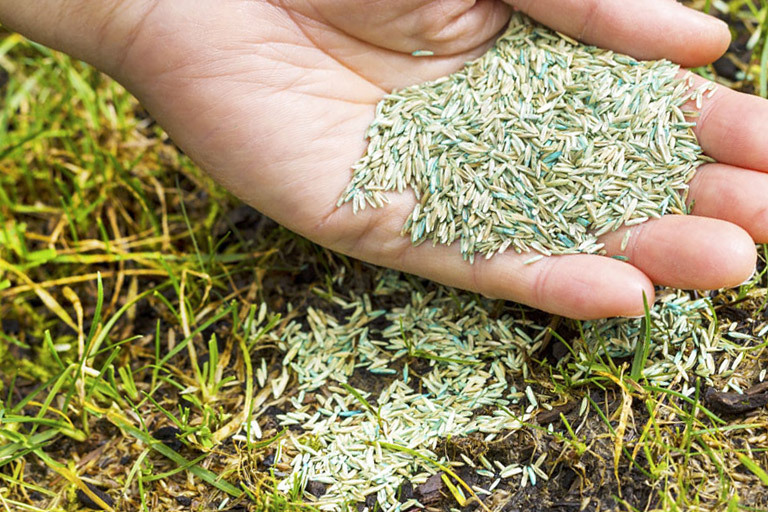
- When carrying out autumn preparation, phosphorus-potassium fertilizers are applied throughout the lawn at the dacha. They allow you to strengthen the plants before winter.

Cleaning the summer cottage
In addition to cleaning the lawn and tidying up the garden, work continues at the dacha to clean the entire area. Fallen fruits can be a source of disease. They are not placed in compost bins, but taken out into garbage bins.
Rake up all the debris remaining after the harvest is completed. If you decide to burn all remains in preparation for winter, follow the fire regulations adopted in the region.
When cleaning a garden plot, different tools will come in handy:
- Garden shredders. Using such devices, you can grind organic waste before mulching tree trunks or placing it in warm beds or compost heaps. They take only those varieties of organic matter that have no traces of diseases or pests.

- Saws. Hand, petrol and electric tools are suitable. They make it easier to trim thick branches and growths affected by dangerous infections of bushes.

-
Blower. Accelerates the purification of a large area from small debris by directed air flow.

If the leaf blower has a vacuum option, cleaning becomes even more intense.
- Garden wheelbarrow. Useful for transporting heavy bags, compost, firewood, planting material, harvested crops, etc. on the dacha site. A wheelbarrow becomes indispensable if you need to take out garbage.
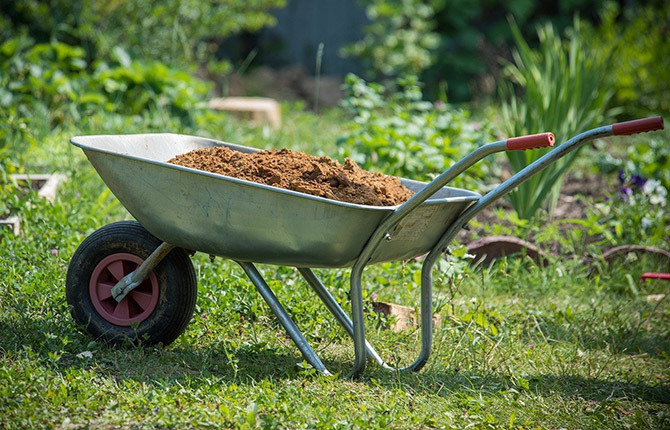
- Mini washer. Water supplied under pressure cleans well the veranda, paved paths, outdoor furniture, etc.

Soil preparation
Before winter, you need to take measures to restore soil fertility in the garden:
- Before digging the soil, which is carried out before heavy frosts, rotted compost is scattered over the surface. On average, the norm is 1.5 buckets per 1 square meter. meter.

- A dacha plot dug up before winter not only makes spring work easier. This preparation allows you to get rid of many harmful insects that overwinter in the ground. When digging, the clods are not broken. They retain moisture in the spring.

- In a greenhouse, the top layer of soil is removed every 3–4 years. They take it out into a separate pile. Disinfection will occur over the winter, after which the soil can be added to the compost bin to re-layer the added organic matter.

- The inner walls of the greenhouse are sprayed with a disinfecting solution, for example copper (3%) sulfate. The soil, if it is not planned to be replaced, is spilled with “Fitosporin” (take 6 ml of the drug per 10-liter container of water).

- In the fall, make a warm bed for cucumbers in the garden. First lay branches, large stems, then chopped grass and manure. Soil is poured on top. Cover with film. In the spring, you will need to water the bed with hot water 2 weeks before sowing and cover it again.

Snowblower
If you plan to visit your dacha in winter, you cannot do without snow removal equipment. Heavy snow drifts can quickly make an area impassable. Types of devices:
- Special snow shovels are convenient because you can bring them with you in the trunk of your car in winter.

- When preparing for winter, if frequent snowfalls are expected, it is worth purchasing compact snow removal equipment. When using it, you will be able to quickly clear paths, dig out gates, and remove snow from the house.

- A leaf blower will also come in handy. This device easily sweeps snow off the paths. You can clean a swept car.

Preparing equipment for winter
To avoid problems arising due to equipment malfunction in the spring, you need to plan its preparation for the autumn season. The following actions may be required:
- Remove hangnails from the handles of various gardening tools. To perform this operation correctly, use sandpaper. A renovator equipped with a grinding head will do.

- During preparation, rusty marks and dirt are removed from cutting and other tools. Use sanding sheets or metal mesh. If the rust covers a large area, soak the tool in vinegar (9%) diluted in equal parts with water for 24 hours. After cleaning, wipe the treated surface with a soft cloth soaked in ethyl alcohol. For good preservation, machine oil is also applied evenly. You can wrap it in an oiled cloth.

- If the saw teeth become dull, restore their sharpness with the tools included in the kit designed for sharpening the chain.

- Before winter, remove wheels from wheelbarrows. Let the air out of them. The units are lubricated with grease. The body is cleaned of dirt.

- Sprayers are washed with clean water inside and out. They are stored for storage after drying.
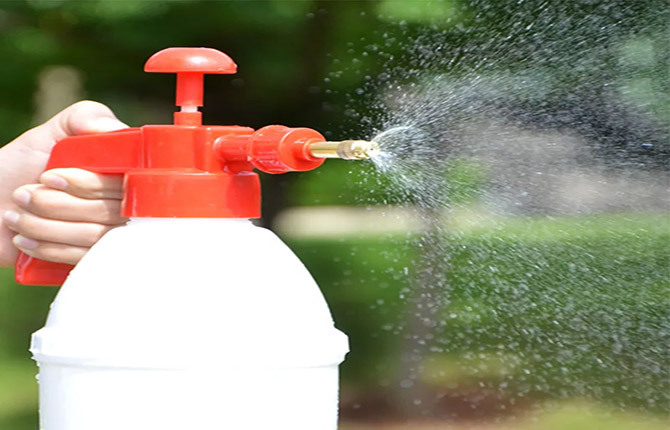
- Remove the nozzles from the hoses. Drain all the water. If leaks are detected, fix them with electrical tape. Roll up the hoses carefully without kinks. They put it in the barn.

Gasoline is drained from devices with internal combustion engines. Carry out the required maintenance according to the instructions. Working at the dacha will be more comfortable if the equipment has been prepared in a timely manner.
Proper preparation of a summer house for winter includes different types of work. It is taken into account that the completeness of their implementation facilitates the holding of spring events. Tell us how you prepare a country plot in the fall. If you are attracted by the information reflected in the article, share it on social networks with your friends and bookmark it.


